Ścinawa 2022-07-08
Railway station in Ścinawa.
Geographic coordinates: 51.409N 16.421E.
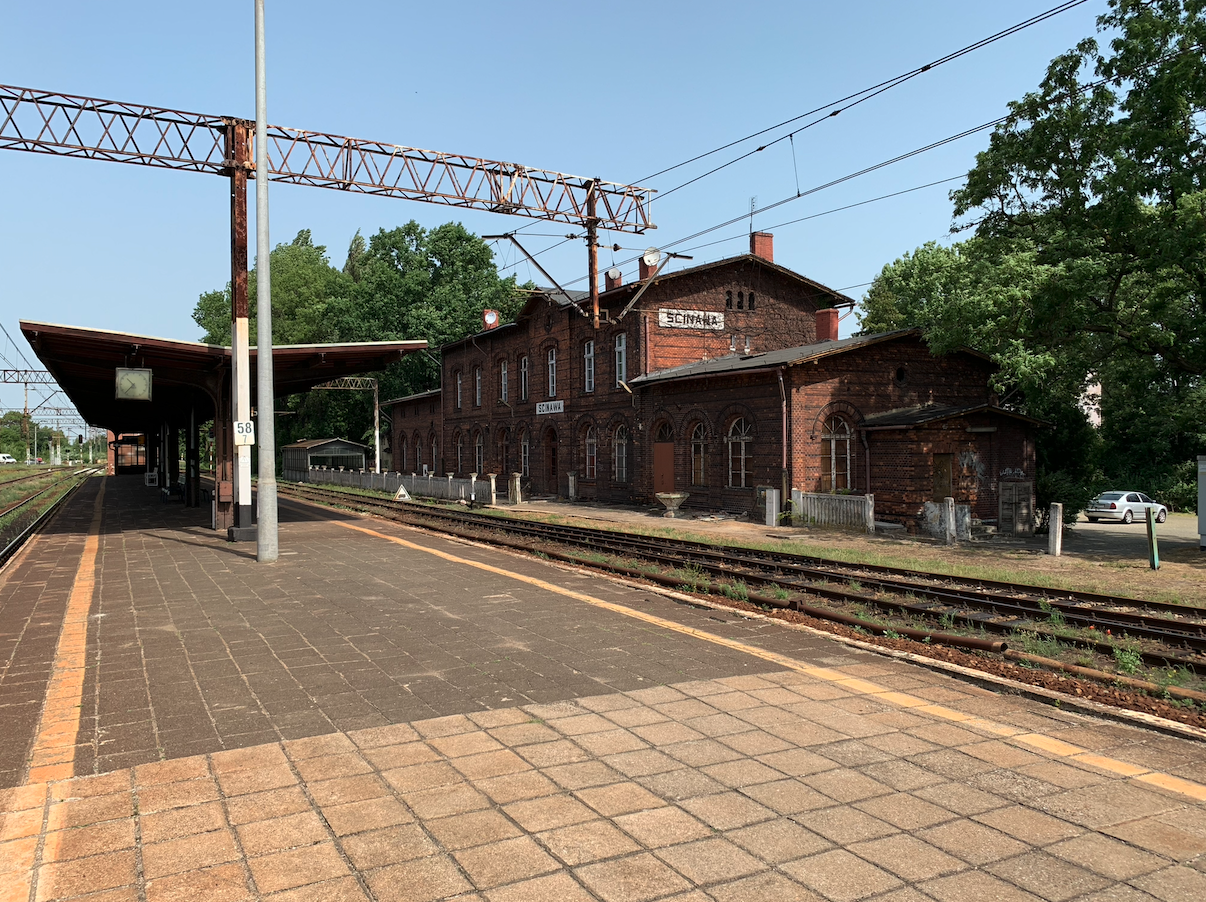
The city of Ścinawa.
Ścinawa is a town in the Lower Silesian Voivodeship, in the Lubin Poviat, and is the seat of the commune. The beginnings of the Ścinawa settlement date back to 1202. City rights were granted to the settlement in 1248. The area of the city is 13.5 square km and is inhabited by 5 530 inhabitants (2019), although in Prussian times there were over 20,000 inhabitants.
The city of Ścinawa is located in the Odra valley, in a flat area, on the edge of Wysoczyzna Lubińska and the Ścinawa depression. The city owes its existence to its location at the intersection of communication routes: the Odra river and the east-west route. In 1876, the railway line Wrocław - Zielona Góra was established, which contributed to the faster development of the city.
Railway in Ścinawa.
In 1874, the railway line Wrocław - Głogów was built, and the railway station in Ścinawa in 1876. At first, the councilors of Ścinawa saw a threat to river transport in turn. Ultimately, it is the Wrocław - Szczecin railway route. The route running through Ścinawa was No. 242 in 1948, and No. 265 in 1988. Currently, it is the railway line No. 273 Wrocław Główny - Szczecin Główny. The line is a double-track, electrified line and is of great importance for Poland. The line was electrified in the 1970s.
In 1898, the railway line Legnica - Rawicz and further to Kobylin was built. The entire trail was popularly called "Kobylinka". It was, because it is no longer used and mostly dismantled. The creation of these railway routes significantly revived the economic development of Ścinawa.
The railway line Legnica - Rawicz - Kobylin was single-track. The line was owned by the private Legnica-Rawicka Railway SA - Liegnitz-Rawitscher Eisenbahn AG. The company was established on May 25, 1897. The line ran through the following towns: Ścinawa, Krzelów, Wąsosz - Rawicz. The railway line Legnica - Rawicz was extended to the Kobylin station and officially opened on February 5, 1898. An important route from Leszno to Ostrów Wielkopolski runs through the Kobylin station. The "Kobylinka" line was 113.027 km long.
In 1948, the Legnica - Rawicz line was No. 245, and in 1988, No. 269. In the 90s of the 20th century, the route was partially dismantled. The Rawicz - Kobylin section in 1948 was No. 312a to the Miejska Górka station and further No. 312d, and in 1988, it was No. 327.
The Legnica - Rawicz line was operated as a cargo and passenger line. It has always been single-track and non-electrified. Due to the low parameters of the route, passenger traffic was suspended throughout the section in 1991. Road transport was much more efficient. Freight transport was suspended in sections in the period 1992 - 2000. In 2014, the Rawicz - Kobylin line was No. 362 and a fragment at the Legnica Północna station as line No. 382, and this section is used sporadically for freight traffic.
Railway station Ścinawa.
It is worth paying attention to the platforms in Ścinawa. Platform 1 served and serves the Wrocław - Głogów route. On the other hand, Platform 2 served trains on the "Kobylinka" route, and around 1910, also on the Wrocław - Głogów route. When we look at both platforms, we notice that Platform 1 is built to a higher standard. It has a long platform roof, which is 60 m long. The surface is made of concrete tiles. The platform is 250 m long. Platform 2, however, has no roof. The surface is gravel. The platform is relatively short and only 140 m long. This was due to other investors of both railway routes.
When the passenger train was coming from Legnica to the Ścinawa station, it could stop only at Platform 2. In the south-eastern head of the station, both routes crossed with each other, with the possibility of going to Wrocław or Rawicz. The "Kobylinka" line ran to the eastern side of the tracks. There were two tracks to Wrocław and one to Rawicz. The banks of the Odra River were crossed by a triple steel bridge consisting of 9 spans, of which one of the longest (the third span from the west) is over the main stream of the river. The entire bridge consists of 27 truss, riveted parabolic spans. The spans rest on 8 brick and stone supports and two abutments.
It is worth mentioning that the intact bridges survived until February 1945. At that time, the Soviet front reached the Odra River and, using the railway and road bridge only 150 m to the north, the Soviets established the "Przyczółek Ścinawski", which was used to further attack the Legnica direction. It is very possible that the Germans dropped three railway spans of the bridge to the Oder river. In March 1945, the Soviets demolished two railway bridges and left only one working track. The bridge spans were transported to the CCCP as trophies. Already in Poland, one of the bridges was rebuilt, with the help of other spans, so that the route was double-track. The original German spans have been renovated and strengthened.
Returning to the railway lines, this should be written; After passing the viaduct over the provincial road No. 340, the "Kobylinka" trail ran north-east, and the trail to Wrocław turns right to the south.
Coming back to "Kobylinka", line No. 362 Kobylin - Legnica Północna, it should be added that from Ścinawa towards Legnica, a bicycle path was built along the former track. But today (2022) there are many traces of the former railway line, especially at the crossroads of tracks and roads.
Further development of the railway in the Ścinawa area.
Around 1910, Ścinawa received further rail connections from the Krzelów station with the following stations: Góra Śląska, Leszno, Bojanów, Odrzycko. After 1919, as a result of the Greater Poland Uprising, the railway bridge over the Barycz River was destroyed. A new border between Poland and Germany was drawn and the railway system changed. Cities; Rawicz, Bojanowo, Leszno found themselves within the borders of the Restored Republic of Poland. The towns of Góra Ślaska, Wąsosz and Żmigród remained on the German side.
In 1919, the river port on the Oder regained importance in Ścinawa. The city had several industrial plants. There was a brickyard, sawmill, iron and sugar foundry, a soap factory, and a brewery.
In 1945, the Germans tried to turn Ścinawa into a fortress by building over 60 bunkers and other defensive structures. The city was defended by a large, but poor and badly armed army. Anyone who was 16 - 60 years old and knew how to stand was a soldier. They were mainly Volkssturm divisions, in which there were mainly farmers. There were also adepts of the NCO School from Jawor, who completed accelerated military training. Before the assault, the Soviets organized an artillery attack lasting several hours, which caused the most damage to buildings in the city. The Soviets entered the city without much problem. Seven Soviet tanks that crossed the road bridge over the Oder caused a lot of damage. About 3,000 soldiers of the neighboring countries died in the fighting. The fights are commemorated by a tank - the T-34 monument, which stands in Ścinawa.
After the Second World War, there were: Cereal plants in Ścinawa. River port on the Oder. Fruit and Vegetable Trade and Processing Plant "Ścinawa". Road Asphalt Terminal "Total". Przedsiębiorstwo Chemii Gospodarczej "Pollena-Ścinawa" SA. Currently (2022), there are several business entities in the area of "Pollena".
Railway station Ścinawa.
The Ścinawa railway station is currently (2022) a local station. Passenger railway traffic in Ścinawa is handled by the following carriers: PolRegio and Koleje Dolnośląskie. Most of the InterCity and TLK long-distance trains bypass Ścinawa via Legnica and Lubin.
There was a locomotive shed at the station, which from 1953 was an auxiliary locomotive shed for the locomotive shed in Legnica. Around 2010, the building was demolished.
The water tower was built in 1874. The building is standing and unused.
Several sidings left the Ścinawa station, including the port, elevator and sugar factory.

Description of the photo: View towards Głogów, to the north. There is a water tower in the distance.
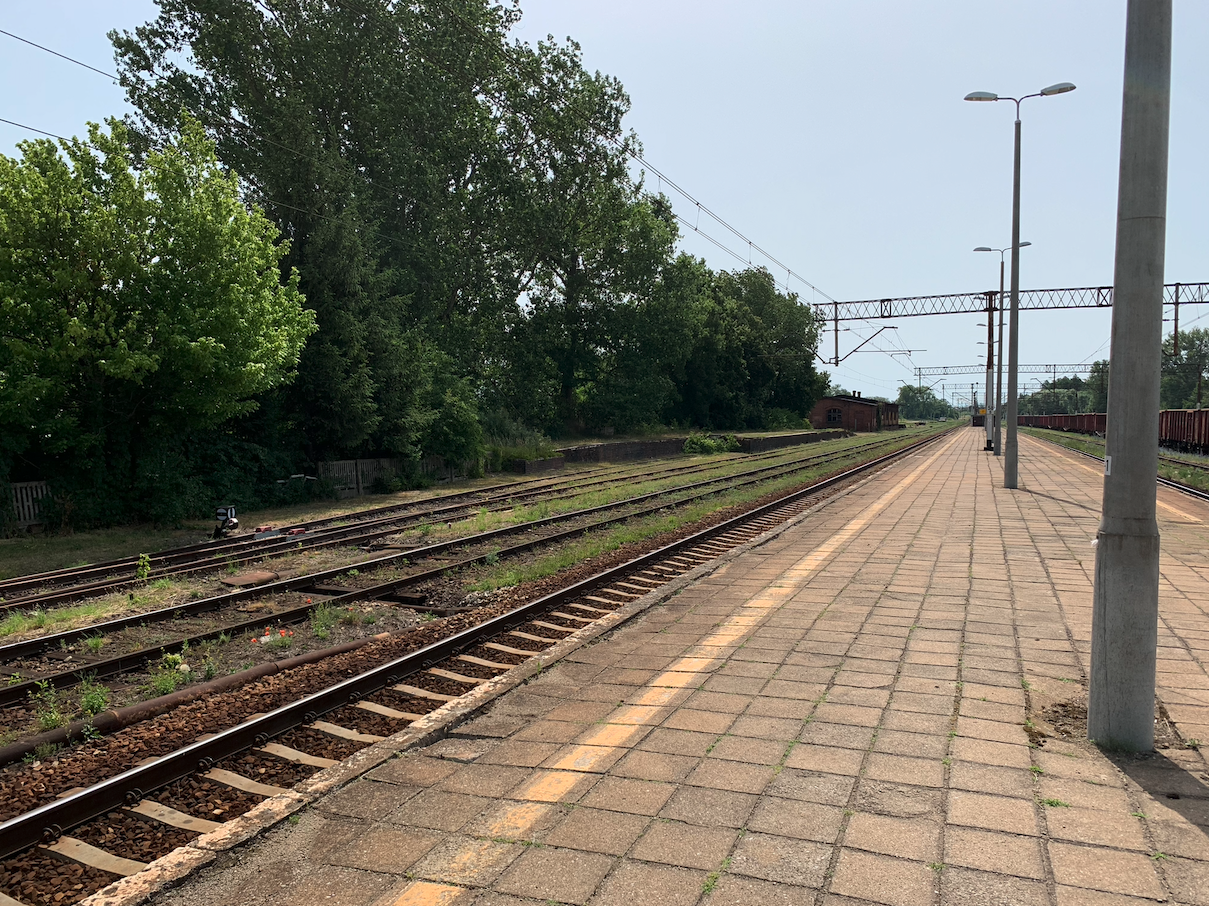
Description of the photo: View towards Wrocław, south.
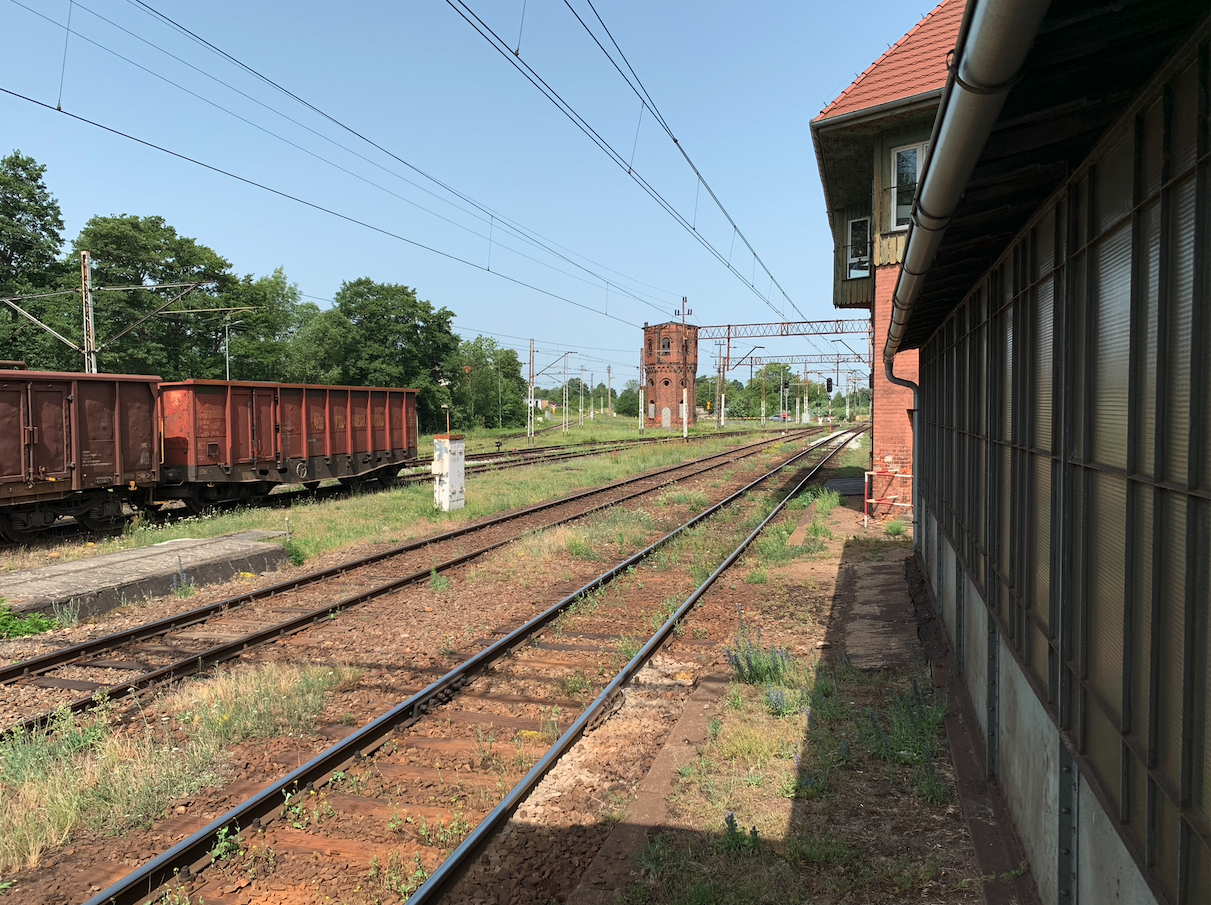
Description of the photo: On the left side of the water tower, the track of the former "Kobylinka" line towards Legnica is visible.
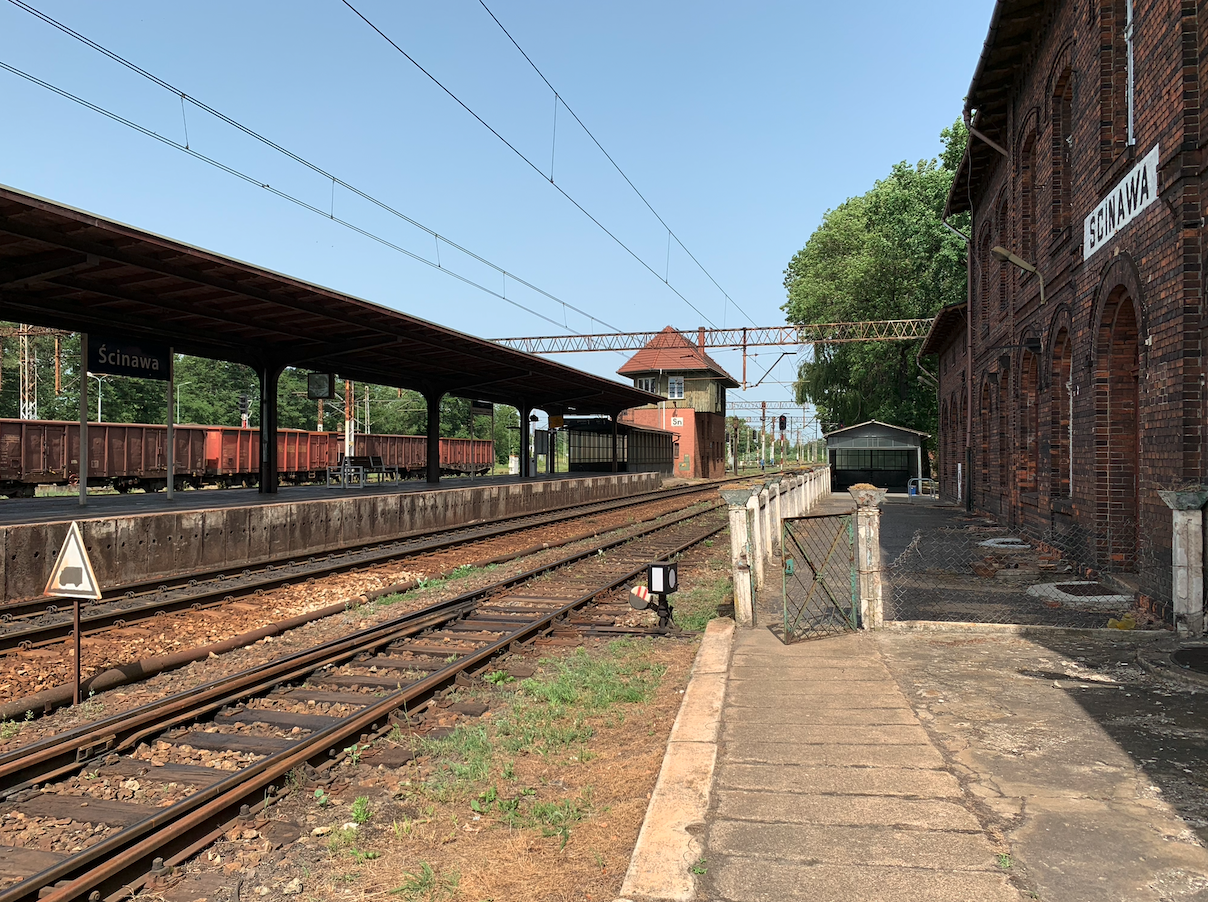
Ścinawa Railway Station.
The railway station in Ścinawa is a multi-box, two-story train station with a basement. The building is made of red and black brick and is not plastered. The station is covered with a gable roof with a slight slope. The building houses apartments for railway families. In 2022, the building is not accessible to travelers. There are no waiting rooms or ticket offices. In addition, a separate toilet building is also not accessible to travelers.
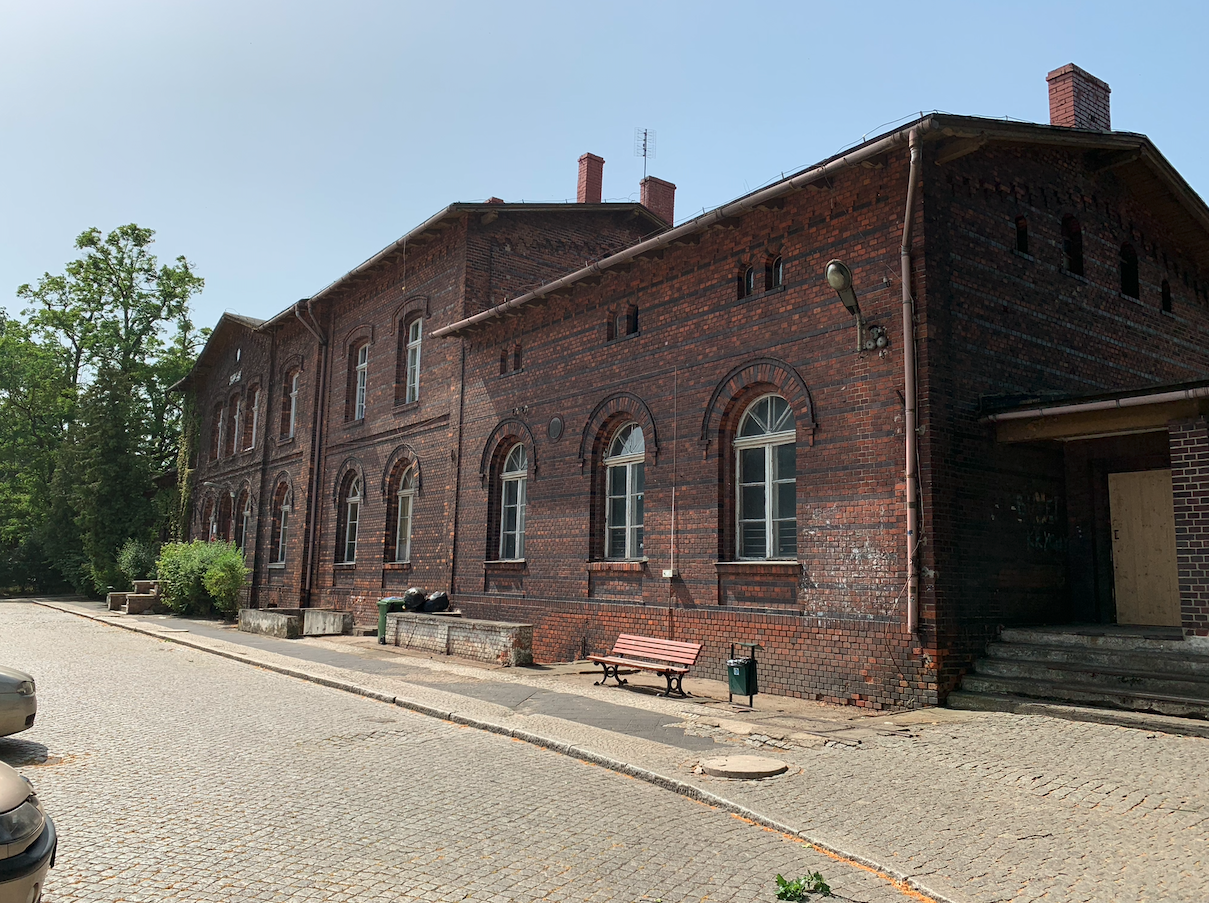
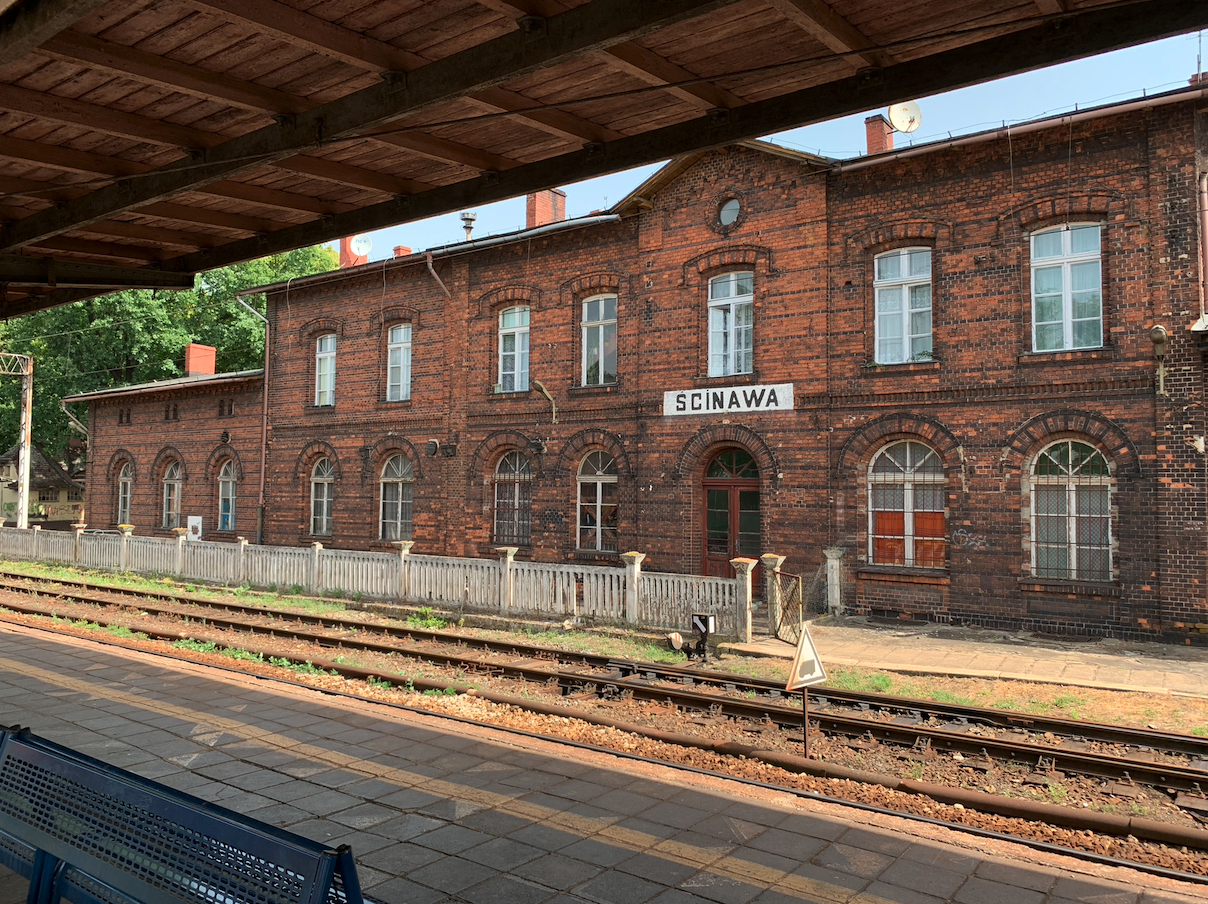
Written by Karol Placha Hetman
